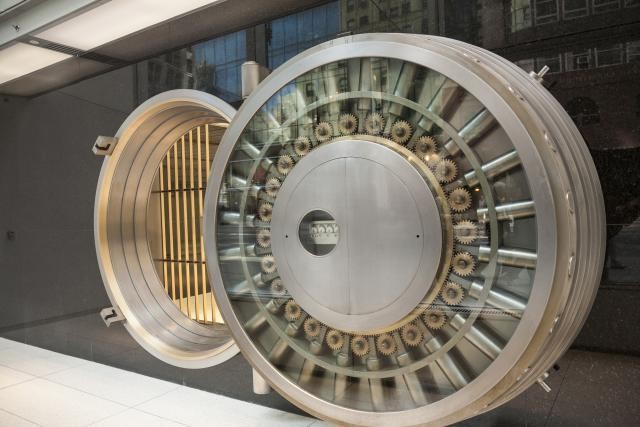Accounts V Understanding Money Markets
Post on: 29 Июнь, 2015 No Comment

Accounts Vs. Funds: Understanding Money Markets
By: BankingMyWay.com Staff
By BankingMyWay Staff
Investors often confuse money market accounts and money market funds for obvious reasons. These two investments have some similarities, but also some key differences. Before you decide which one is right for your investment portfolio, it’s important to understand the fundamentals of these products. Don’t be confused by semantics when making your decisions.
Money market accounts are interest-bearing bank accounts used primarily as savings instruments. They have some check-writing privileges, but most money market accounts limit the number of transactions to around six per month. Some banks also impose minimum dollar amounts on transactions. Money market accounts typically pay higher interest rates than standard savings accounts or interest-bearing checking accounts, but they also have high minimum balances. Most money market accounts must carry a balance of at least $1,000, but minimums of $5,000 and $10,000 are also common.
BankingMyWay’s Money Market section lets you compare rates and balance requirements from banks in your area. Sovereign Bank (Stock Quote: SOV ), Bank of America (Stock Quote: BAC ) and Citibank (Stock Quote: C ), for example, all require a $10,000 minimum for their money market accounts, with rates ranging from 1.5%, 1.25% and 1.010% respectively.
Money market mutual funds, on the other hand, are a type of mutual fund that is invested in short-term, low-risk, highly liquid investments like U.S. Treasuries and commercial paper. Money market funds strive to maintain a net asset value of $1. Investors are paid out in fractional shares just like other mutual funds. These funds also have check-writing privileges, but tend to have much lower balance requirements than money market accounts and no restrictions on transactions.
The largest difference between money market accounts and money market funds is that as bank products, money market accounts are insured by the Federal Deposit Insurance Corporation (FDIC). That means that if the issuing bank fails, your money is still safe up to $250,000 (although this number is scheduled to reset to its original amount of $100,000 after December 31, 2009).

Money market funds do not have FDIC protection, but they are still widely considered very safe because of the stability of the securities in which they are invested. Still, if there were a rush of immediate withdrawals from the fund or if enough assets in the underlying investment pool declined, the fund could lose money.
Another key difference between money market accounts and money market funds is that money market funds have expenses. Like other mutual funds, the expenses to operate and market the fund are passed onto the shareholders. Investors should consider the expense ratio of a money market fund before investing. An abnormally high expense ratio can offset any returns on investment.
Money market accounts are often used to save for and pay for high-priced expenses such as college tuition, but the money is not often kept in these accounts for more than a few months. If you do not need access to the money for six months or more, a higher-paying investment like a certificate of deposit (CD) is a better option. By the same turn, money market funds are not intended for lengthy investments. They are generally used to temporarily park cash before transferring it into another investment. Some long-term retirement portfolios are over-invested in money market funds, which do not produce enough return to build a nest egg.
For more ways to save, spend, invest and borrow. visit MainStreet.com.














